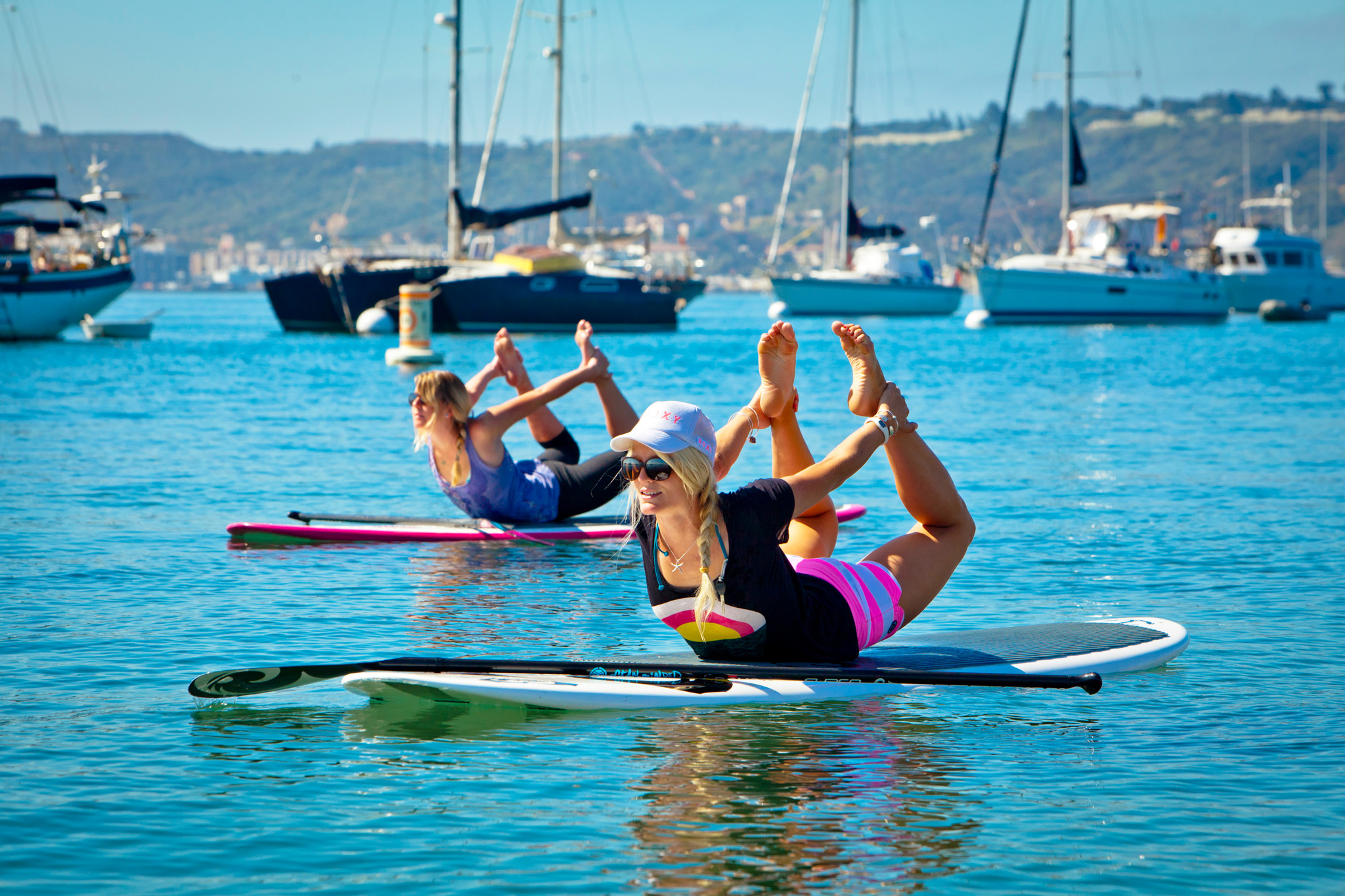Even though it still takes time to master, the learning curve on using a SUP is a lot less steep than learning how to surf. Admittedly, you would be best to learn to ride a SUP on flat water initially; it will definitely not take very long to get in the ocean surf, should that be what you’re wanting to do.
But where do you begin with regards to deciding on a stand up paddle board? Well, it really is dependent on what sort of paddling you wish to do. You’ll want to think about where you are likely to be using your stand up paddle board. If you live close to a lake, it’d be the better choice to buy a flat water SUP. Likewise, if you are living near to the ocean, a surfing SUP would be a little more ideal for you.
This SUP buyer’s guide will provide you with an insight into the different types of boards, which should lets you make a much better decision on which SUP would be ideal for you.
SUP buyer’s guide – Types of stand up paddle boards
All arounders
These type of boards are great for those who are just starting out on a SUP, or who are in need of a board that will surf both small waves and paddle across flat water (such as lakes). They usually come in lengths of 10 foot 6 inches (10’6“) to twelve foot (12′). Widths range from thirty inches (30“) to thirty six inches (36“). For those who are looking primarily to paddle across lakes, then go as wide and long as is possible, as this will provide you with the best stability. If you’re looking to hit the surf, you’ll need a shorter board that isn’t as wide.
Remember, these sorts of boards are not designed for extreme flat water racing, or large waves – they’re built so its possible to get the best of both worlds.
Surfing SUPs
If you’re looking to purely surf waves with your SUP, you then want to go shorter in length (anything less than 10 foot – 10′ – is a great starting point). If you are coming off a surfboard, then choosing a narrow board should be perfectly fine, but for those only starting out, you want a good width to help you with stability. Thirty-thirty two inch (30“-32“) is an ideal starting point.
These boards are often based off their surfboard cousins when it comes to design – lots of rocker (the curvature of the board toward the nose), narrow tails, and various fin configurations.
Yoga sups
For anyone looking to get into stand up paddle board yoga (SUP Yoga), you are looking for a wide board for plenty of stability. Ideally you need a fairly flat board with minimal rocker, as well as a comfortable deck pad. Some Yoga SUPs have quite a square look – this will make them very stable within the water, but keep in mind it’s not made to paddle much more than out to a suitable spot just offshore to practice your yoga.
Another good option for SUP Yoga is to use an inflatable paddle stand up paddle board.
Racing sups
These types of boards are usually much longer than regular SUPs, and are generally a lot less wide. They can vary from 12 foot (12′) right through to eighteen foot (18′) in length. Widths usually range from twenty five inches (25“) through to thirty two inches (32“).
These boards need to plane through the water at high speed, and employ many design strategies obtained from sailing. They tend to use displacement hulls (indicated by their pointed nose), which permit the board to “slice” through the water.
These boards tend to be more costly, and are not designed for beginner use.
Touring/flat water sups
These sorts of boards are made for use on open flat water. When you have got up to speed, it is a lot easier to continue easily. These boards are typically over ten foot six inches (10’6“) and most include tie downs and storage areas, which can also make these a great choice for people that have considered trying their hand at fishing from a SUP.
Inflatable SUPs
A relatively recent addition to the stand up paddle board family, the inflatable SUP is a good choice for people who might not have much storage space, or trouble moving a regular size SUP both to and from the water. Inflatable SUPs can fold away to a small size of approx. thirty two inches (32“) in most cases, and most feature a storage bag of some sort.
When inflated to their recommended PSI, these boards are as stable as their fibreglass/epoxy counterparts. In fact, some inflatable SUPs can be hard to recognize from regular paddle boards.
These boards also make very good SUP yoga boards.
SUP buyer’s guide recommendation: Tower Adventurer 9’10” Inflatable SUP
Paddles
Most SUPs come with paddles, but the majority of these paddles are made from aluminum. These are definitely perfectly fine generally, but tend to be heavy, do not float and are also susceptible to corrosion if you don’t washed after use in salt water. A great alternative is a carbon fiber paddle. These stand up paddle board paddles are lightweight, float and don’t get affected by salt water. They do are more expensive, but if you are looking to get the very best through your paddling, it might be worth considering one of these as an investment.
Conclusion
Hopefully this SUP buyer’s guide has been helpful to you. Just remember to be truthful with yourself with regards to your skill level, and exactly what is you would like to get out of stand up paddle boarding, so you are sure to make a good decision!
 Paddle Weekend Your Paddle Weekend
Paddle Weekend Your Paddle Weekend
